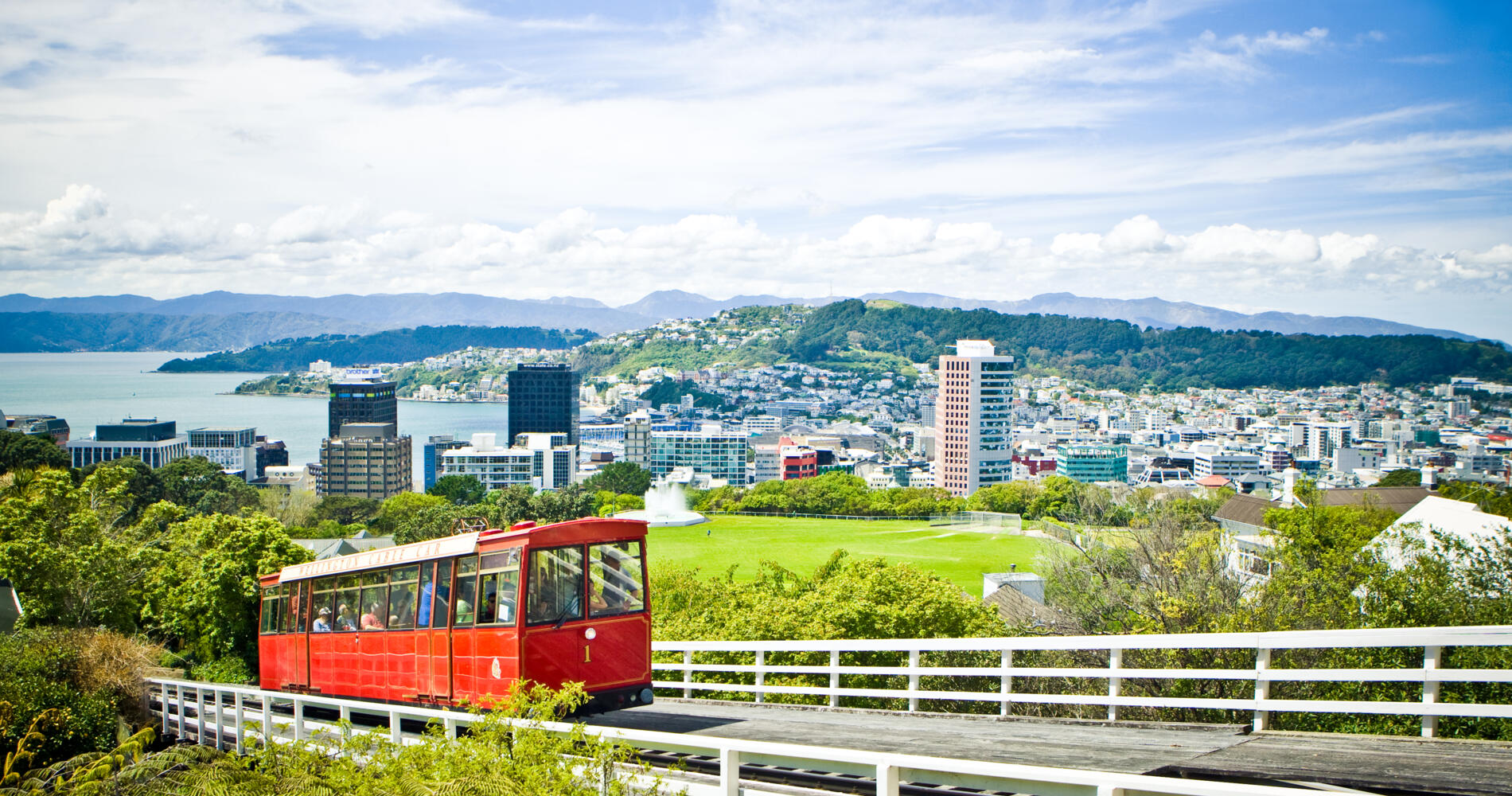New Zealand, often referred to as Aotearoa in the Māori language, is a captivating country known for its breathtaking landscapes, vibrant culture, and rich history. Located in the southwestern Pacific Ocean, this island nation offers a unique blend of natural wonders and cultural treasures. From its stunning fjords and lush rainforests to its dynamic cities and rich indigenous heritage, New Zealand stands as a testament to the diverse beauty and cultural richness of the Pacific region.
Table of Contents
Geography
New Zealand consists of two main landmasses, the North Island and the South Island, along with over 700 smaller islands. The country covers a total area of approximately 268,000 square kilometers. The North Island, known for its geothermal activity and vibrant cities, is separated from the South Island by the Cook Strait. The South Island, renowned for its majestic mountains and fjords, is the larger of the two main islands. The country’s varied topography includes mountain ranges, rolling plains, lush rainforests, and dramatic coastlines, making it a haven for outdoor enthusiasts and nature lovers.
New Zealand is situated about 2,000 kilometers southeast of Australia and is surrounded by the Pacific Ocean to the east and the Tasman Sea to the west. The country’s isolation in the southwestern Pacific has led to the development of unique flora and fauna, with many species found nowhere else in the world. New Zealand’s geographic features include the Southern Alps, which run the length of the South Island, and numerous lakes, rivers, and fjords that enhance its natural beauty.
States of New Zealand
New Zealand does not have states. Instead, it is divided into 16 regions for administrative purposes. These regions are governed by regional councils, and there are also unitary authorities that combine the functions of regional and district councils in some areas.
Here’s a table listing New Zealand’s 16 regions and 2 additional unitary authorities, along with their capitals:
| Number | Region/Unitary Authority | Capital |
|---|---|---|
| 1 | Northland | Whangārei |
| 2 | Auckland | Auckland |
| 3 | Waikato | Hamilton |
| 4 | Bay of Plenty | Tauranga |
| 5 | Gisborne | Gisborne |
| 6 | Hawke’s Bay | Napier |
| 7 | Taranaki | New Plymouth |
| 8 | Manawatū-Whanganui | Palmerston North |
| 9 | Wellington | Wellington |
| 10 | Tasman | Richmond |
| 11 | Nelson | Nelson |
| 12 | Marlborough | Blenheim |
| 13 | West Coast | Greymouth |
| 14 | Canterbury | Christchurch |
| 15 | Otago | Dunedin |
| 16 | Southland | Invercargill |
| 17 | Chatham Islands Territory | Waitangi |
| 18 | Waikato District (unitary authority) | Ngaruawahia |
Note: Auckland and Wellington are not only capitals of their respective regions but also the largest and capital cities of New Zealand, respectively.
History
New Zealand’s history is a rich tapestry woven from the experiences of its indigenous Māori people, early European explorers, and subsequent colonial developments. The Māori, Polynesian settlers who arrived in New Zealand around 1,000 years ago, developed a complex and vibrant culture based on their connection to the land and sea. They established intricate social structures, practiced traditional arts and crafts, and engaged in agriculture and fishing.
The arrival of European explorers in the 17th century marked a significant turning point in New Zealand’s history. Dutch navigator Abel Tasman was the first European to sight the islands in 1642, but it was British explorer James Cook who extensively mapped the country in the late 18th century. Cook’s voyages led to increased European interest in New Zealand, with British settlers establishing trading posts and missions.
The 19th century saw significant changes as European settlers arrived in greater numbers, leading to conflicts with the Māori over land and sovereignty. The signing of the Treaty of Waitangi in 1840 between the British Crown and Māori chiefs was a pivotal moment in New Zealand’s history, intended to establish a framework for British sovereignty while recognizing Māori land rights. However, the treaty’s implementation led to disputes and land confiscations, which continue to be addressed in contemporary New Zealand.
Throughout the 20th century, New Zealand evolved into a modern, independent nation, gaining full sovereignty from Britain in 1947 with the passage of the Statute of Westminster and the New Zealand Constitution Act. The country has developed a strong sense of national identity and pride, with a focus on addressing historical grievances, promoting Māori culture, and engaging in international diplomacy.
Top Ten Must-Visit Destinations
1. Milford Sound
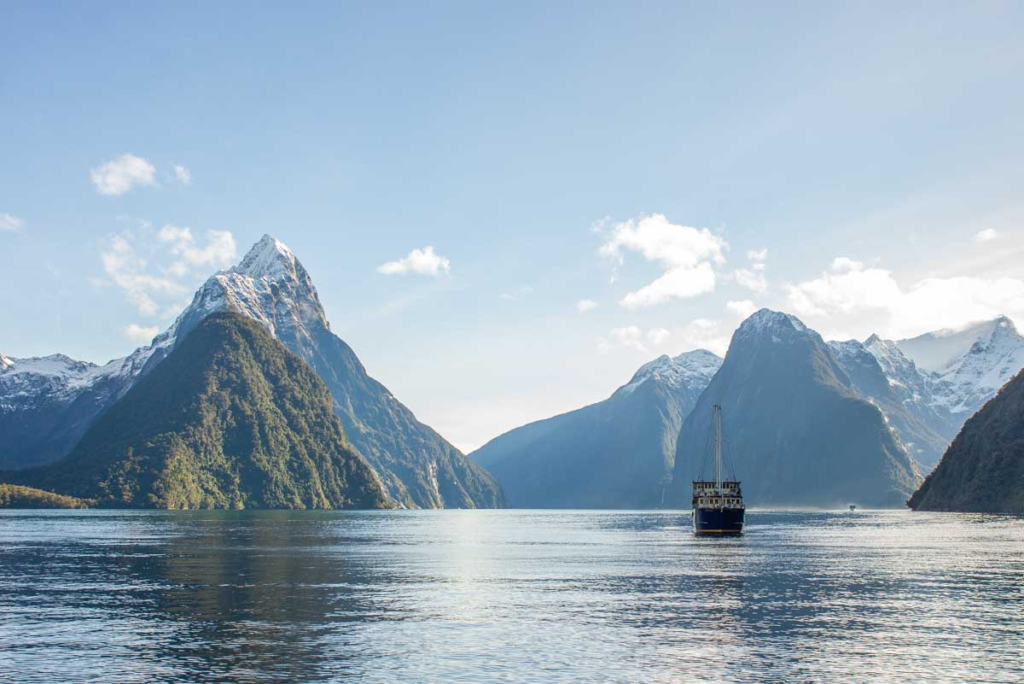
Milford Sound, located in Fiordland National Park on the South Island, is one of New Zealand’s most iconic natural wonders. This stunning fjord is renowned for its dramatic scenery, featuring towering cliffs, lush rainforests, and cascading waterfalls. Visitors can take scenic cruises to explore the fjord’s serene waters and admire the breathtaking landscapes, including the famous Mitre Peak. Milford Sound is a must-visit destination for nature enthusiasts and photographers seeking to capture the beauty of New Zealand’s wilderness.
2. Queenstown
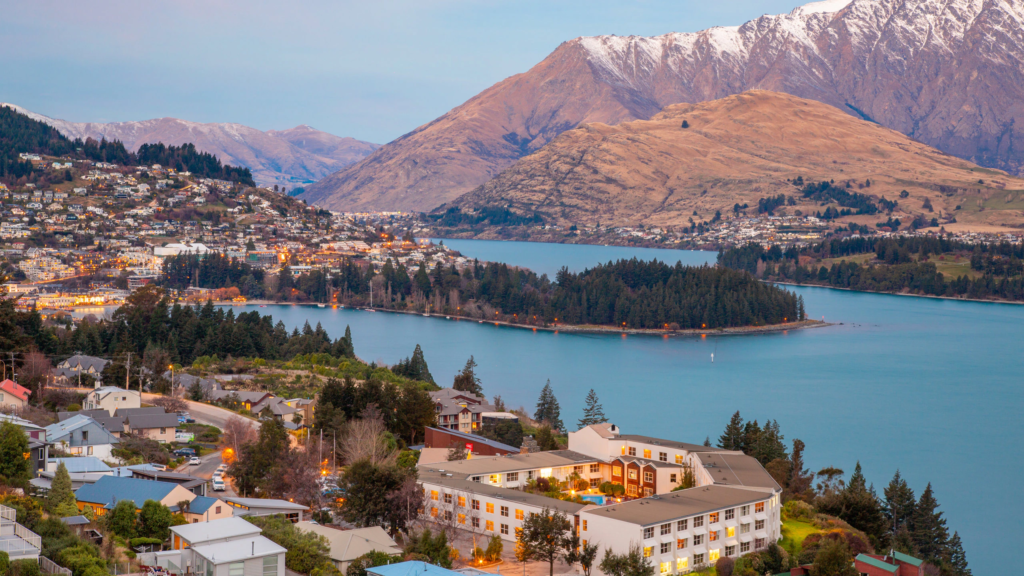
Queenstown, situated on the shores of Lake Wakatipu, is known as the adventure capital of New Zealand. The town offers a wide range of outdoor activities, including bungee jumping, skydiving, and skiing. Surrounded by the Southern Alps, Queenstown provides stunning panoramic views and is a gateway to nearby attractions such as the Remarkables mountain range and the stunning Glenorchy region. The town also boasts a vibrant dining scene, boutique shops, and a lively nightlife.
3. Rotorua
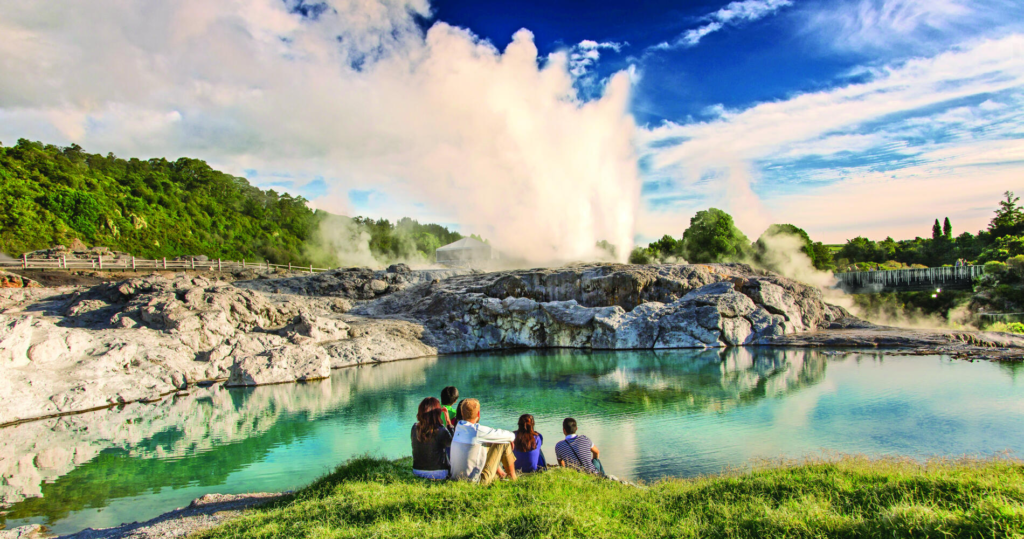
Rotorua, located on the North Island, is famous for its geothermal activity and rich Māori culture. The city features geothermal parks with bubbling mud pools, geysers, and hot springs. Visitors can also experience traditional Māori performances and feasts at cultural villages such as Te Puia and Tamaki Māori Village. Rotorua’s unique landscape and cultural experiences make it a fascinating destination for those interested in both natural phenomena and indigenous heritage.
4. Wellington
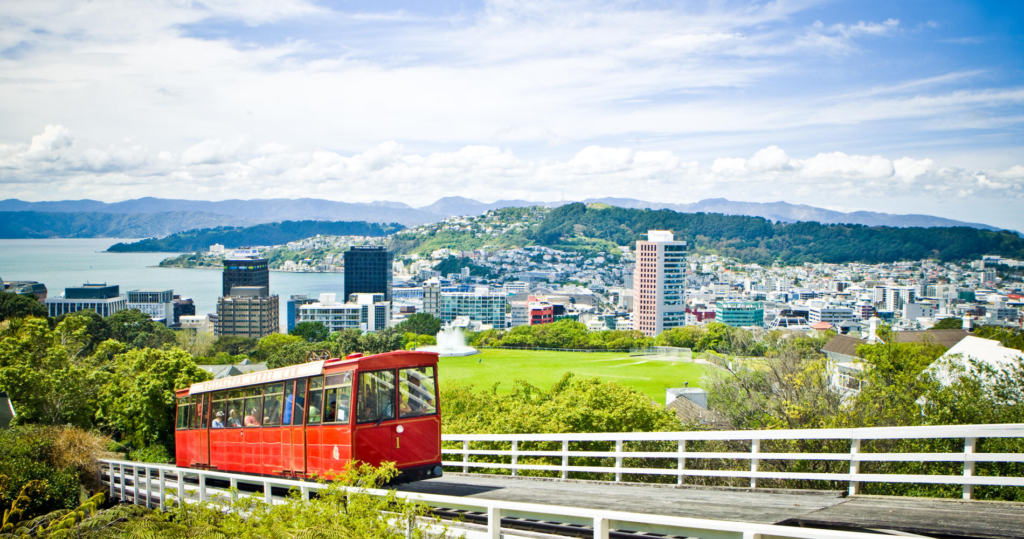
Wellington, New Zealand’s capital city, is known for its vibrant arts scene, historic architecture, and picturesque harbor. The city is home to numerous cultural attractions, including the Te Papa Museum, which showcases New Zealand’s history, art, and natural environment. Wellington’s lively waterfront area offers excellent dining and entertainment options, while the surrounding hills provide scenic walking and hiking opportunities. The city’s blend of culture, history, and natural beauty makes it a compelling destination.
5. Auckland
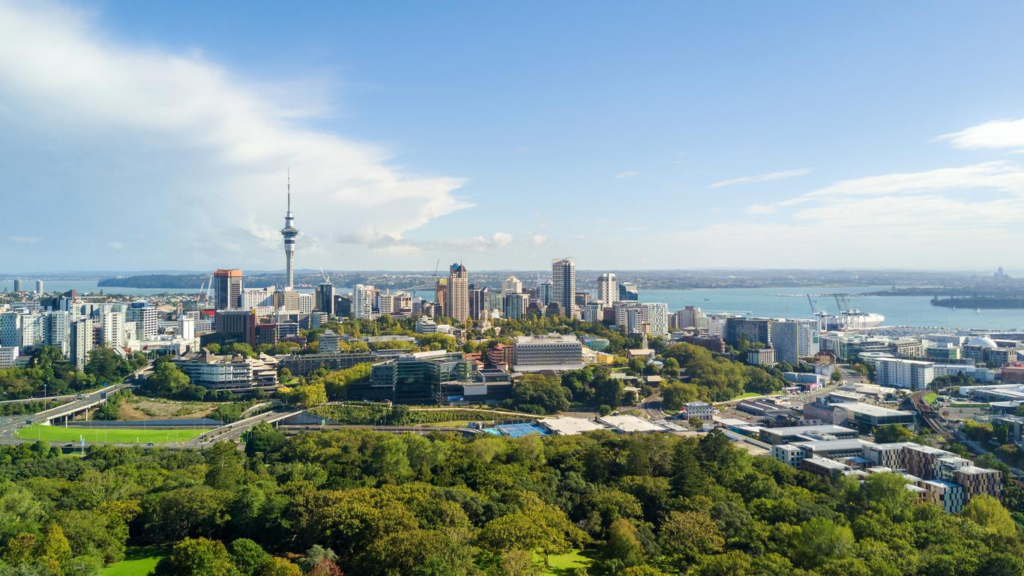
Auckland, the largest city in New Zealand, is a dynamic metropolis known for its diverse culture and stunning coastal scenery. The city features iconic landmarks such as the Sky Tower, which offers panoramic views of the city and its surroundings. Auckland is also home to beautiful beaches, including Mission Bay and Piha Beach, as well as numerous parks and recreational areas. The city’s vibrant arts scene, diverse dining options, and lively nightlife make it a must-visit destination.
6. Tongariro National Park
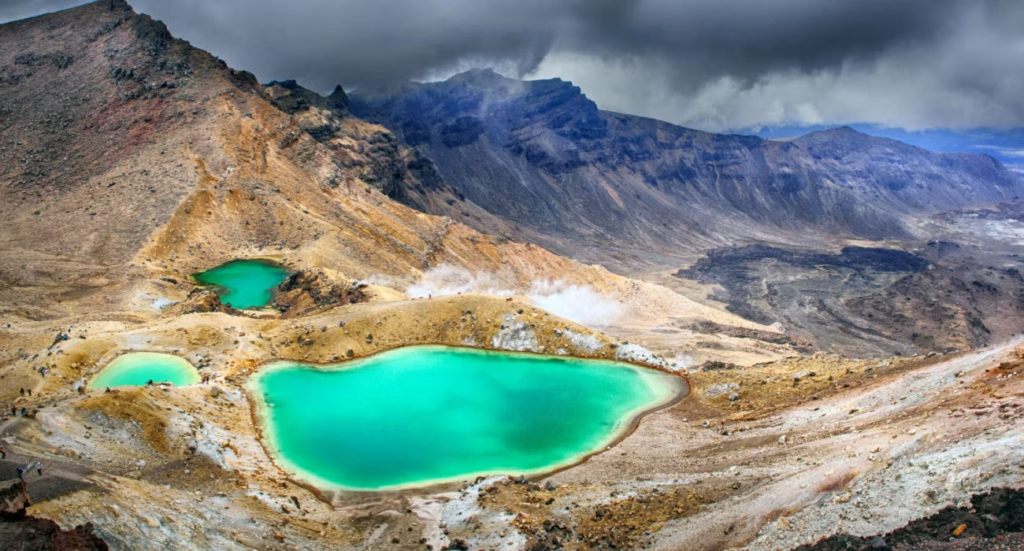
Tongariro National Park, located in the central North Island, is a UNESCO World Heritage Site renowned for its volcanic landscapes and alpine scenery. The park is home to the Tongariro Alpine Crossing, one of New Zealand’s most popular day hikes, offering stunning views of volcanic craters, emerald lakes, and rugged terrain. The park also features the active volcanoes Mount Tongariro, Mount Ngauruhoe, and Mount Ruapehu, which are significant both geologically and culturally.
7. Christchurch
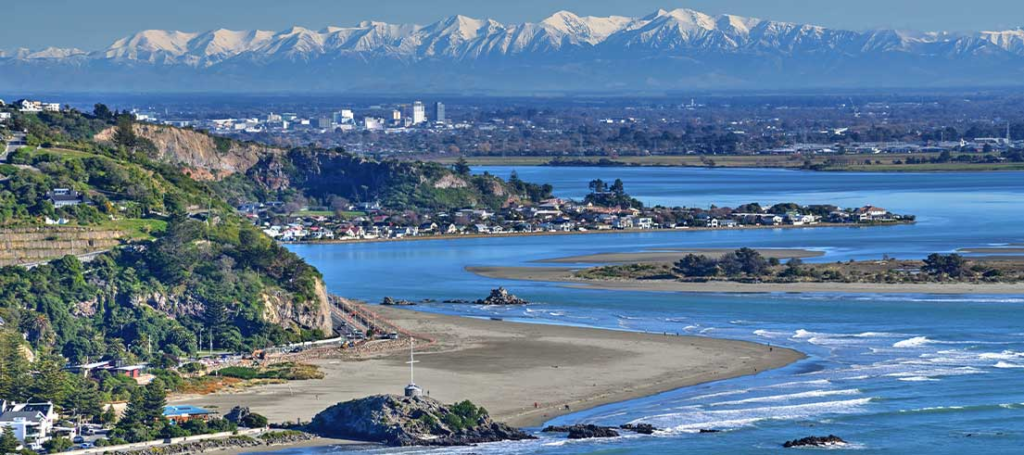
Christchurch, known as the Garden City, is located on the South Island and is famous for its beautiful parks, historic architecture, and vibrant arts scene. The city features the stunning Christchurch Botanic Gardens, which offer a peaceful retreat from urban life. Christchurch is also home to a growing number of cultural attractions, including art galleries, theaters, and museums. Despite the challenges posed by recent earthquakes, the city continues to thrive and develop, offering visitors a unique blend of history, culture, and natural beauty.
8. Dunedin
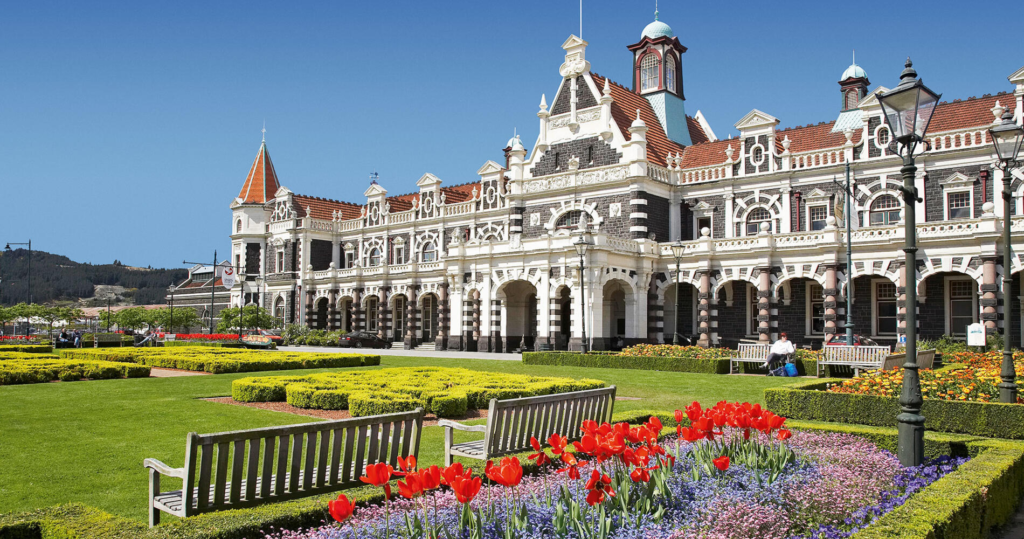
Dunedin, situated on the southeastern coast of the South Island, is known for its well-preserved Victorian and Edwardian architecture, as well as its rich Scottish heritage. The city is home to notable attractions such as Larnach Castle and the Otago Museum. Dunedin’s surrounding region offers opportunities for wildlife viewing, including the chance to see albatrosses and penguins at the Otago Peninsula. The city’s blend of historical charm and natural beauty makes it an intriguing destination for visitors.
9. Bay of Islands
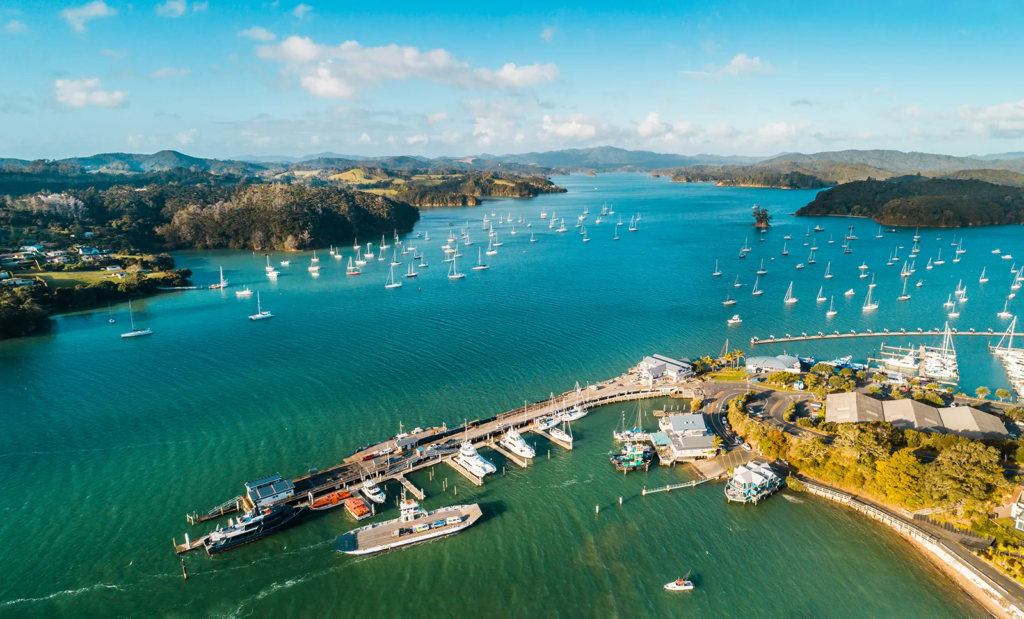
The Bay of Islands, located in the northern part of the North Island, is a picturesque region known for its beautiful beaches, crystal-clear waters, and historical significance. The area is famous for its maritime history and offers opportunities for sailing, fishing, and dolphin watching. Key attractions include the Waitangi Treaty Grounds, where the Treaty of Waitangi was signed in 1840, and the charming town of Russell, known for its historic buildings and scenic waterfront.
10. Abel Tasman National Park
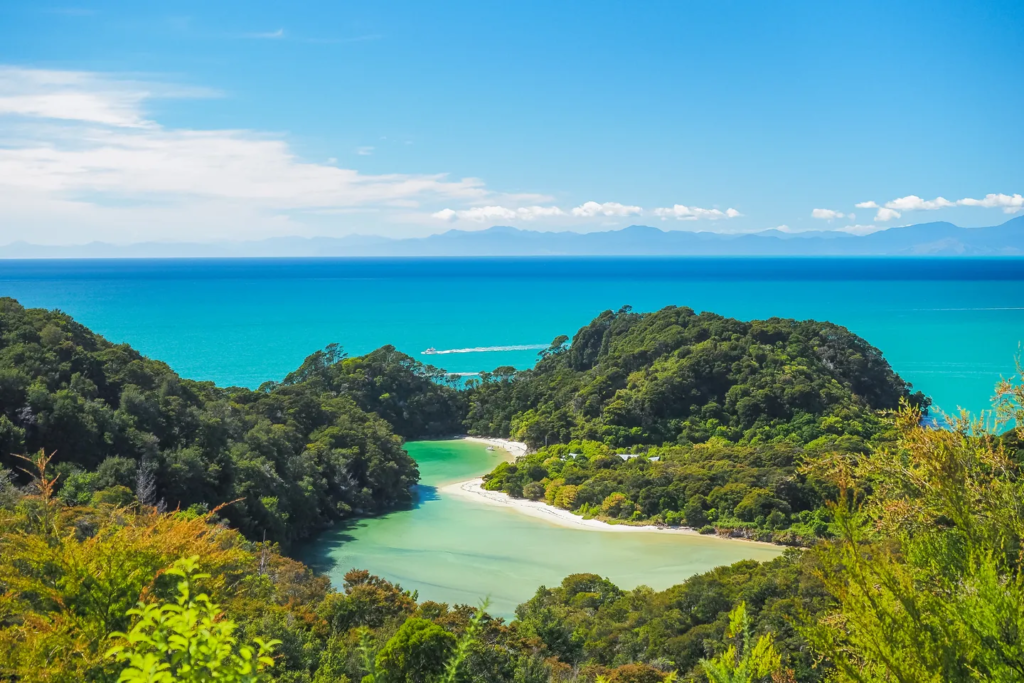
Abel Tasman National Park, located on the northern coast of the South Island, is renowned for its stunning coastline, golden beaches, and lush forests. The park offers a range of outdoor activities, including hiking, kayaking, and sailing. The Abel Tasman Coast Track is one of New Zealand’s Great Walks, providing breathtaking views of the park’s pristine beaches and turquoise waters. The park’s natural beauty and recreational opportunities make it a top destination for outdoor enthusiasts.
Culture
New Zealand’s culture is a rich tapestry woven from its Māori heritage and European influences. The Māori people, the island nation’s indigenous population, have a profound impact on New Zealand’s cultural identity. Traditional Māori customs, language, and arts are celebrated and preserved through various cultural practices and events. The concept of “manaakitanga,” or hospitality, is central to Māori culture and reflects the island’s warm and welcoming spirit.
The New Zealand culture is also influenced by its colonial history and diverse immigrant communities. British settlers introduced their own traditions, which have blended with Māori practices to create a unique cultural landscape. Modern New Zealand embraces a multicultural society, with a vibrant mix of cultural festivals, culinary traditions, and artistic expressions. The country’s cultural heritage is celebrated through various events, including Māori cultural performances, traditional crafts, and contemporary art exhibitions.
Festivals
New Zealand hosts a variety of festivals and cultural events throughout the year, reflecting its diverse cultural landscape and vibrant arts scene. One of the most significant events is the “Māori New Year,” or Matariki, which marks the beginning of the Māori lunar calendar and is celebrated with feasts, ceremonies, and community activities. Other notable festivals include the “Wellington International Arts Festival,” showcasing performances, music, and visual arts, and the “Queenstown Winter Festival,” offering a range of winter sports and entertainment activities. These festivals play a crucial role in preserving cultural traditions and promoting community engagement.
Economy
New Zealand’s economy is diverse and well-developed, with key sectors including agriculture, tourism, and technology. Agriculture plays a significant role in the country’s economy, with New Zealand being a major exporter of dairy products, meat, and wool. The tourism
industry also contributes significantly to the economy, attracting visitors from around the world to experience the country’s natural beauty and cultural attractions. Additionally, New Zealand has a growing technology sector, with a focus on innovation and research. The country’s stable political environment, skilled workforce, and strategic location make it an attractive destination for business and investment.
Cuisine
New Zealand’s cuisine is a reflection of its diverse cultural influences and abundant natural resources. Traditional Māori dishes, such as “hangi” (a method of cooking food in an earth oven) and “kumara” (sweet potato), are celebrated for their rich flavors and cultural significance. Additionally, New Zealand’s cuisine features a wide range of fresh seafood, including green-lipped mussels, and unique lamb dishes. The country’s culinary scene also includes influences from British, Pacific Island, and Asian cuisines, resulting in a dynamic and flavorful food culture.
Top Eight Most Famous Food







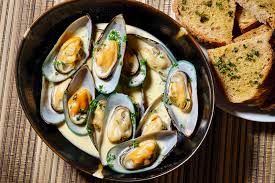
Ten Interesting Facts
- Nauru is the world’s smallest island nation by area, covering just 21 square kilometers.
- The island’s phosphate deposits have been a major economic driver in the past.
- Nauru is located in the Central Pacific, northeast of Australia.
- The island has a central plateau surrounded by a narrow coastal strip.
- Nauru gained independence from Australia in 1968.
- The island was occupied by Japanese forces during World War II.
- Nauru’s official languages are Nauruan and English.
- The island has a tropical climate with little seasonal variation.
- Nauru is known for its distinctive raised coral atoll structure.
- The island’s traditional arts include weaving and carving, reflecting its cultural heritage.
Conclusion
New Zealand, with its stunning landscapes, rich cultural heritage, and vibrant cities, offers an extraordinary experience for travelers. From the dramatic fjords of Milford Sound to the bustling urban energy of Auckland, the country presents a diverse range of attractions and experiences. Whether you are drawn to its natural beauty, historical landmarks, or cultural richness, New Zealand invites you to explore its many wonders and immerse yourself in the unique spirit of the Land of the Long White Cloud. This remarkable nation promises an unforgettable journey filled with adventure, discovery, and inspiration.

